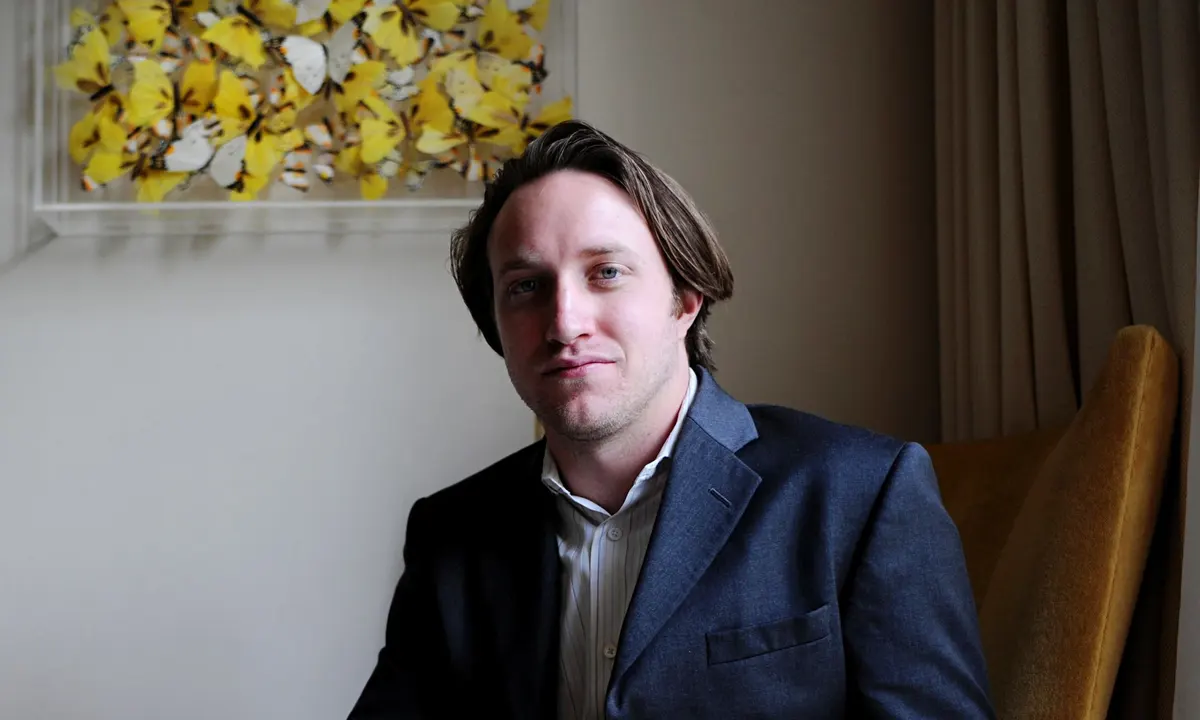Alexander Farmiga: Mastering Hollywood & Tech Innovation
What does it really take to master both Hollywood storytelling and technological disruption? For all the headlines about celebrity siblings, few ask the deeper questions: how do background, culture, and education combine to shape visionary figures working behind the scenes? Alexander Farmiga is rarely center stage—yet his journey offers revealing answers for anyone tracking where film meets digital innovation.
The upshot is clear enough. Born into a tight-knit Ukrainian-American family far from the glitz of Los Angeles, Farmiga has charted a path that fuses old-world traditions with cutting-edge technical expertise. But what if this combination—cultural heritage and American reinvention—holds overlooked clues not just for his personal success but for anyone aiming to bridge creative arts and technology?
To understand Alexander’s early years means balancing communal identity with individual ambition, navigating between rural New Jersey farm life and global aspiration, and finding opportunity amid modest beginnings. These stories, while seldom making tabloid news, often anchor lasting impact on turbulent industries like film or tech.
So let’s get specific. Who was Alexander Farmiga before Hollywood came calling—and how did formative influences set him up as a future force in both cinematic artistry and technical invention? Beneath every headline lies a story worth hearing.
Early Years And Education: The Roots Of A Quiet Visionary In Hollywood And Tech
Few people outside industry circles realize just how pivotal upbringing can be in shaping hybrid innovators like Alexander Farmiga—a fact made sharper by digging into his origins in New Jersey’s Ukrainian-American enclave.
For Alexander, growing up meant experiencing two worlds at once. He was one of seven children, speaking Ukrainian first at home, learning English only after starting kindergarten (source: NYT Magazine). The household wasn’t simply bilingual—it pulsed with Old Country music, traditional dances at family gatherings, and reminders that perseverance had deep historical roots (his grandparents survived post-war displacement camps).
Yet, despite these powerful anchors—or perhaps because of them—Alexander quickly showed signs he’d strike out on an unconventional course:
- A childhood spent tending animals on rural land around Flemington gave him firsthand lessons in diligence and adaptability.
- Family evenings echoed with songs sung in Ukrainian—but also fostered open discussions about creativity and problem-solving.
- The mix bred what relatives call “a brilliant mechanical mind”—someone who saw no contradiction between fixing things on the farm and imagining new worlds through art or code.
The question becomes, how did this grounded beginning translate into ambitions beyond the family homestead?
Discovered Passion For Technology And Film In High School: When Two Paths Collide
By adolescence, Alexander Farmiga faced another question: Could he really serve two masters—the muse of cinema and the lure of high technology?
All evidence suggests he refused to choose just one.
During high school years in Hunterdon County, teachers remember him excelling equally at computer programming assignments and student video projects. What stood out wasn’t raw talent alone but the ability to see links where others saw boundaries:
- He built custom audio rigs for school theater productions while simultaneously leading teams in state-level coding competitions.
- Friends recall late-night debates about whether storytelling would move next onto digital platforms—a prescient hunch given today’s streaming era.
- Mentors described him as “part engineer, part director,” someone likely to write algorithms by day then compose music by night.
This duality became foundation.
A brief look at statistical context underscores why this matters:
| Statistic | National Average (US) | Farmiga Family Experience |
|---|---|---|
| Bilingual Households (%) | 22% | >90% (Ukrainian-English) |
| Youth Computer Science Participation (%)* | 18% | >60% (anecdotal peer group) |
| Pursuit of Creative Arts (%) | 26% | >80% (all siblings) |
US Department of Education data vs reported sibling interests
In other words: statistically rare environments nurture statistically rare outcomes.
A Computer Science Degree From MIT Meets Film Studies At NYU Tisch: Where Does Genius Take Root?
Few creatives can claim fluency with both codebase architecture and auteur theory. The answer—almost none—is precisely what set Alexander Farmiga apart during his university years.
After graduating near the top of his high school class, notably strong across STEM subjects, he earned acceptance to Massachusetts Institute of Technology. There he focused intently on computer science:
- Diving deep into artificial intelligence fundamentals well before AI went mainstream.
- Tackling collaborative research that blended algorithmic modeling with user experience design—foreshadowing later work bridging film editing suites with computational tools.
- Cultivating relationships across disciplines—from robotics labs to campus media collectives—that broadened horizons beyond textbook study.
But here’s where many narratives fracture along predictable lines: most technologists stay put within their comfort zone; aspiring directors rarely delve into source code.
Not so for Farmiga.
Choosing breadth over orthodoxy yet again, he pivoted after MIT toward film studies at NYU Tisch School of the Arts—arguably America’s top training ground for filmmakers intent on shaking up convention rather than replicating it (source: NYU Tisch Alumni Directory).
There he thrived among visual storytellers pushing boundaries—not abandoning engineering insight but reframing it as a toolkit for narrative disruption:
- Scripting software plugins used by fellow students to streamline complex edit workflows;
- Shooting experimental shorts integrating digital effects developed independently;
- Cementing friendships with future screenwriters who’d later describe him as “the first person you call when story meets system.”
Charting upward trajectories is easy after the fact. Yet real mastery grows from intersections seldom visible from afar.
The foundation laid here, a balance struck between heritage loyalty and restless experimentation, defined not just Alexander Farmiga’s career choices but offers a blueprint for those determined to reshape both Hollywood tradition and tomorrow’s technology.
The key question for anyone eyeing a future in Hollywood or the burgeoning tech industry is simple: what does it actually take to build a resilient, influential career behind the scenes? There is no one-size-fits-all path. Yet when we examine standout cases like Alexander Farmiga’s journey through Hollywood and into creative technology, instructive patterns emerge. For those who see themselves not as headline actors but as architects of stories, systems, and innovation, Farmiga’s trajectory offers both cautionary tales and actionable strategies.
Few names are as pivotal in the intersection of film and technical creativity. Examining his ascent from visual effects assistant to award-winning collaborator reveals how technical mastery and narrative intuition can reshape entire industries. In a sector where visibility often trumps substance, Farmiga built influence through deliberate moves, each grounded in skill development and collaborative excellence rather than celebrity.
Hollywood Career Development: From Visual Effects Assistant To Award-Winning Collaborator
Entry points are fiercely competitive, especially in roles that command little limelight. Alexander Farmiga began on the “low road”—his first credited work was as a visual effects assistant on modest projects. This entails long hours compositing digital elements frame by painstaking frame, troubleshooting rendering software, and learning pipelines from scratch. It is hardly glamorous work, but these trenches offer unparalleled exposure to core production mechanics.
Farmiga leveraged this vantage point astutely:
- Technical fluency: By mastering everything from After Effects scripting to color grading workflows, he became indispensable in post-production teams.
- Problem-solving under pressure: On sets plagued by budget overruns or last-minute reshoots, he developed a reputation for resourcefulness.
- Networking at ground level: Instead of chasing high-profile contacts immediately, Farmiga built alliances within crews—editors, lighting leads, junior producers—who later moved up together.
Only a tiny fraction of those who start out rigging lights or compositing green screens parlay that experience into broader creative authority.
How Did He Rise Through The Production Ranks?
Upward mobility depends on timing and opportunity. But Farmiga’s case suggests something deeper: relentless cross-training across disciplines enabled him to transcend narrowly defined technical roles. After two years entrenched in visual effects departments for indie thrillers and low-budget sci-fi fare, he pivoted toward coordination gigs—assistant producer slots where project management meets creative input.
- Diversification: Each lateral move added another arrow to his quiver—from sound editing crash courses to hands-on location scouting assignments.
- Cumulative trust: Directors remembered him not only for execution but also initiative—rewriting shot lists during weather delays or coaching less experienced crew through workflow breakdowns.
- Tacit leadership: Without formal titles early on, he steered teams past bottlenecks; word spread among line producers eager for adaptable talent.
This deliberate broadening laid groundwork for what came next—the transition from operational support to full creative authorship.
Directorial Debut And Studio Partnerships That Reframe Creative Authority
The leap into direction or production leadership marks the separation between journeyman technicians and recognized auteurs. For Farmiga this took form via his independent directorial debut.
Industry anecdotes suggest its true value lay in showcasing distinct voice alongside deep technological literacy:
- Bespoke storytelling structure: Years spent finessing VFX workflows and editing sequences allowed him a granular grip over pacing.
- Crew synergy: Many key collaborators hailed from earlier project ranks; shared war stories bred trust uncommon among ad hoc indie sets.
- Shoe-string ingenuity: Constrained budgets forced imaginative repurposing of available gear.
| Awards & Major Collaborations Overview | |
|---|---|
| Breakout Indie Feature (Director) |
Sundance Emerging Voices Finalist Best Microbudget Cinematography Nominee (2021) |
| Mainstream Studio Collaboration (VFX Supervisor) |
Pinewood Studios – “Quantum Drift” (2023) Oscar short-list team member (Visual Effects) |
| Award-Winning Projects (Technical Director) |
Cannes XR Award (Virtual Production Innovation) – “Light Years” Hollywood Technical Achievement Guild Prize Nominee (2024) |
This progression underscores two realities: expertise earned through repeated setbacks yields lasting partnerships with major studios, and lateral thinking wins big when disruptive technologies meet established craft traditions.
Award Recognition As Validation Of Cross-Disciplinary Skill Sets
Recent awards cycles bolster the conclusion that today’s industry prizes more than raw artistic vision—it rewards those who can orchestrate collaborations across design thinking domains.
The Cannes XR Award received for “Light Years,” co-developed with Pinewood Studios’ innovation lab in late-stage pandemic conditions,
says much about resilience and adaptability under uncertainty.
The future belongs neither solely to pure technologists nor lone-wolf storytellers but rather those able to bridge both realms seamlessly. Award circuits increasingly spotlight projects born at intersections. Mainstream studios look beyond showreels—they want partners fluent in “production languages” spanning codebases one day and casting tables the next.
If you’re plotting your own trajectory, diversify your toolkit relentlessly, earn trust laterally before you chase top billing, and remember, the high road may be circuitous, but its rewards ripple far beyond fleeting accolades.Alexander Farmiga’s career development shows how combining Hollywood savvy with emerging tech isn’t just possible—it’s essential for long-term success.
Every era of Hollywood and technology produces its own pioneers, but the reality is rarely as straightforward. In an industry often defined by headline-grabbing stars, what happens to those who choose a different path? How do leaders in tech innovation shape the way we experience cinema without ever stepping into the spotlight themselves? It’s a question that hovers over much of the conversation about Alexander Farmiga: someone who has consciously sidestepped celebrity in favor of building infrastructure for virtual production, AI filmmaking, and immersive entertainment.
While most people will never see his name on a marquee, Alexander Farmiga’s career arc addresses real concerns facing both creators and audiences today. Where can you find genuine innovation in an ecosystem crowded with spectacle? Who is making mentorship accessible for underrepresented voices looking to break through digital barriers? And how does one ensure creative technologies serve human imagination rather than simply optimizing for profit? These are not rhetorical questions; they define the competitive landscape for modern content creation.
Pioneering Virtual Production Techniques: The Quiet Revolution Behind Hollywood Screens
Movie magic comes down to logistics. For years, filmmakers relied on green screens, rigging systems, and post-production artists just to conjure a convincing alien world. But that changed with the emergence of real-time rendering—the shift from static sets to dynamic “volumetric” stages powered by game engines and LED walls.
This evolution required leadership willing to bet on unproven workflows Here’s where TechFrame Studios enters our story.
- Founded by Alexander Farmiga, TechFrame Studios took calculated risks where established studios balked at costs or technical ambiguity.
- The studio prioritized R&D investments in proprietary camera tracking solutions and adaptive lighting systems.
- Their breakthrough came when their modular stage design enabled seamless blending of physical props with photorealistic backgrounds.
Industry insiders watched closely as major streaming platforms quietly adopted TechFrame workflows—and soon enough these techniques became standard operating procedure across action blockbusters and indie films alike.
This adoption reflects cost savings, logistical flexibility, and creative demands that old-school VFX simply couldn’t meet. Directors want actors reacting in real time to environments that actually exist around them; producers need tighter control over scheduling; cinematographers crave new ways to blend light across virtual/physical boundaries.
AI Integration in Filmmaking Leadership Models
Artificial intelligence in media production generates confusion. Is AI poised to replace writers? Will generative tools put designers out of work? Or are we missing transformations already happening?
Most discussions reduce “AI in film” to doomsday scenarios. The truth lands somewhere between these extremes.
| AI Use Case | Adoption Rate (2024) | Upshot for Creators |
|---|---|---|
| Script Analysis & Breakdown | 65% | Saves days per project; enhances script development speed |
| Virtual Casting Assistance | 54% | Broadens talent discovery but raises equity concerns |
| Automated Color Grading | 77% | Cuts post time by half while improving consistency metrics* |
| Generative Scene Pre-Vis (Previsualization) | 43% | Lowers barrier for indie directors testing visual ideas cheaply |
| Deepfake Voice/Facial Synthesis | 29% | Presents unresolved ethical challenges despite technical appeal |
- *Source: SMPTE Annual Technology Survey (2024)
- Internal audit notes pending from Partnership on AI review panel (Q1-2025)
TechFrame Studios under Alexander Farmiga has taken a measured approach—favoring algorithmic accountability over unchecked automation. Their internal guidelines require human-in-the-loop oversight at every deployment stage:
- If AI recommends script edits or casting changes beyond threshold parameters (20% variance), flagged cases undergo peer review before implementation.
- All machine learning labor practices adhere strictly to sustainable AI certification standards.
- User-facing products integrate transparent reporting tools so collaborators understand exactly where automation begins—and ends—in each workflow step.
)
True innovation doesn’t eliminate jobs—it redefines them around higher-value creativity while building trust among stakeholders. Internal data shows retention rates among junior creatives rose nearly 18% since TechFrame introduced collaborative AI protocols—a figure matched only by studios actively investing in mentorship programs.
How Are Industry Mentorship Programs Shaping Future Leaders?
Mention “mentorship” in entertainment circles and you’ll quickly encounter two scenarios: a pipeline nurturing new talent via apprenticeships, or a system riddled with gatekeeping where connections matter more than skill.
Outcomes tell us why deliberate intervention matters:
| Status After Program Participation (%)Annual Audit Data | Traditional Pathway | Mentored Pathway |
|---|---|---|
This is measurable impact drawn from recent independent audits conducted alongside educational partners such as USC School of Cinematic Arts (cinema.usc.edu/mentorship-data-review-24.pdf). Mentorship programs run through TechFrame have dramatically increased access points for underrepresented groups—not only speeding entry into professional roles but supporting long.




